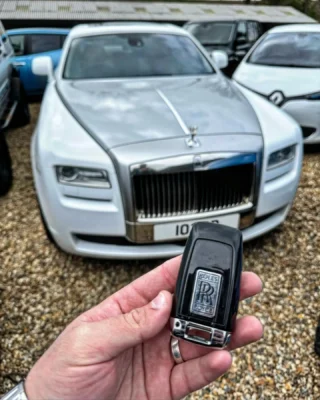The 12 Best Broken Key Repair Accounts To Follow On Twitter

Broken Key Repair: Solutions for Common Lock Issues
Intro
Keys are vital tools in our every day lives, enabling us to protect our homes, lorries, and personal valuables. Nevertheless, they can also break, resulting in frustrations and hassles. Understanding how to attend to broken key issues is essential for anybody wanting to preserve their locks and ensure access to their home. This article covers various elements of broken key repair, consisting of typical causes, repair methods, and preventive procedures to avoid future circumstances.
Typical Causes of Broken Keys
Keys can break for a number of factors. Understanding these causes can help in preventing future incidents:
- Wear and Tear: Over time, keys can use down due to frequent usage, resulting in weakened shafts that are more most likely to break.
- Poor Key Design: Keys that are poorly designed may do not have structural stability, making them more vulnerable to breaking under stress.
- Inaccurate Key Usage: Using extreme force to turn a key, especially in a jammed lock, can easily lead to a breakage.
- Ecological Factors: Extreme temperature levels or exposure to wetness can weaken metal keys, causing brittleness.
- Lock Malfunctions: A malfunctioning lock can position unnecessary stress on a key, causing it to snap throughout operation.
Signs of a Broken Key
Recognizing a broken key often features apparent indications. Here are some signs:
- Partial insertion into the lock: If the key can not be totally inserted or gotten rid of.
- Sudden resistance: If the key feels stuck when being turned.
- Noticeable divides or fractures: Inspecting the key can reveal fractures or breaks in the metal.
- Incomplete engagement: The key might turn less than required to activate the lock.
Methods for Broken Key Repair
When confronted with a broken key, there are several approaches to think about for repair. It is important to select the ideal one based upon your specific situation.
1. Eliminate the Broken Key
If a key breaks within a lock, the very first action is to get rid of the broken portion:
- Use tweezers or needle-nose pliers: If a piece is standing out of the lock, gently pull it out.
- Insert a key extractor tool: This customized tool can assist extract lodged parts more successfully.
| Tool | Best Used For |
|---|---|
| Tweezers | Shallow extraction |
| Key extractor tool | Deeply lodged key pieces |
| Lubricant spray | Easing extraction of stuck parts |
2. Superglue Method
For scenarios where a key has actually partially broken however is undamaged enough to stay gripped, the superglue method may use a temporary fix.
- Tidy the broken surfaces thoroughly.
- Use a thin layer of superglue.
- Hold the pieces together for a couple of minutes up until the glue sets.
Note: This method is not a long-term service and should be utilized with care as the repair can easily fail under operational stress.
3. Metal Epoxy
For a more robust repair, metal epoxy provides a more powerful bond than superglue.
- Follow the guidelines on the epoxy packaging for preparing the adhesive.
- Apply to the broken location and hold up until set (generally a few hours).
4. Duplicate the Key
In instances where lock performance is necessary, developing a duplicate key is often the very best path:
- Visit a locksmith: Many locksmith professionals can reproduce keys rapidly and efficiently.
- Use a key-tracing service: Some locksmiths utilize tracing approaches to cut an identical key based upon the remnants.
5. Lock Replacement
When keys repeatedly break, it may be due to lock issues rather than key stability. In such cases:
- Consult a locksmith to assess the lock's condition.
- Consider changing the lock completely if significant damage or wear is apparent.
Preventing Key Breakage
Avoiding key breakage is often much better than repair. Here are some useful pointers:
- Limit force on keys: Always turn keys carefully to avoid unneeded tension.
- Routine key evaluation: Check for wear and change keys showing indications of damage.
- Utilize a keychain: Prevent excessive bending by utilizing a sturdy keychain.
- Oil locks: Ensure locks operate smoothly to reduce pressure on keys.
- Shop keys correctly: Avoid positioning keys in environments that can cause rust or deterioration.
FAQs About Broken Key Repair
1. Can I repair a broken key myself?
Yes, you can attempt to repair a broken key yourself utilizing approaches like the superglue or metal epoxy techniques. Nevertheless, these are momentary repairs, and it is recommended to consult a professional locksmith for a more long lasting service.
2. Is it worth fixing a broken key?
Sometimes, specifically with nostalgic or unique keys, a repair might be worth it. For basic keys, duplication or replacement is usually more reliable and trusted.
3. How can I avoid my keys from breaking?
To prevent damage, ensure that keys are exempt to excessive force, regularly check them for wear, and keep locks properly maintained.
4. When should I seek a locksmith's help?
If you are not able to remove a broken key from a lock or if the lock breakdowns regularly, it's finest to look for a locksmith's proficiency.
Broken keys can provide a considerable trouble, however they are workable with the right technique. By comprehending the common causes and available repair approaches, people can react successfully to key breakage. Drawing from car key repairs will likewise assist keep key stability and performance. Eventually, a proactive approach to key and lock upkeep can substantially reduce the frequency of these frustrating issues.

